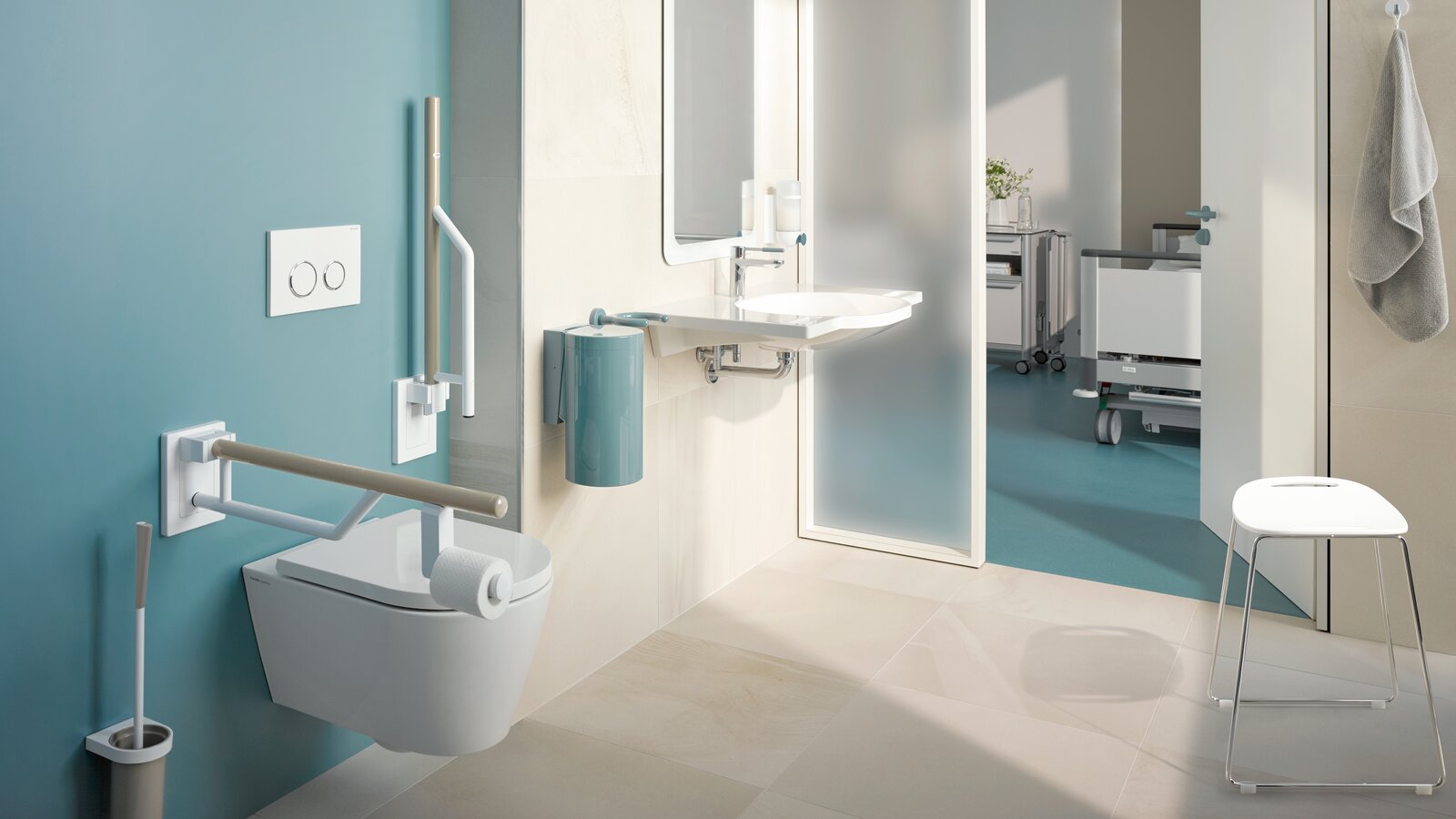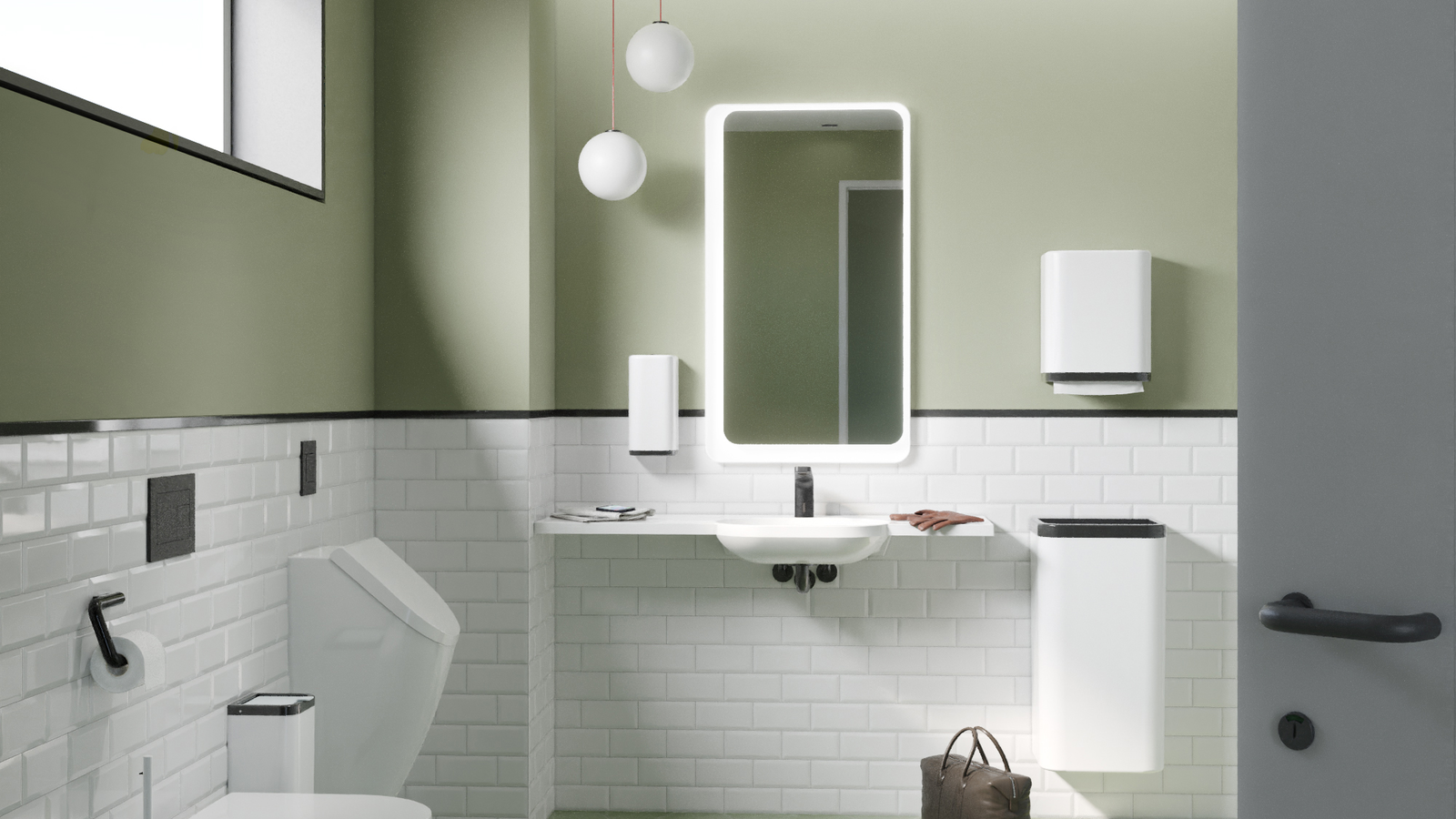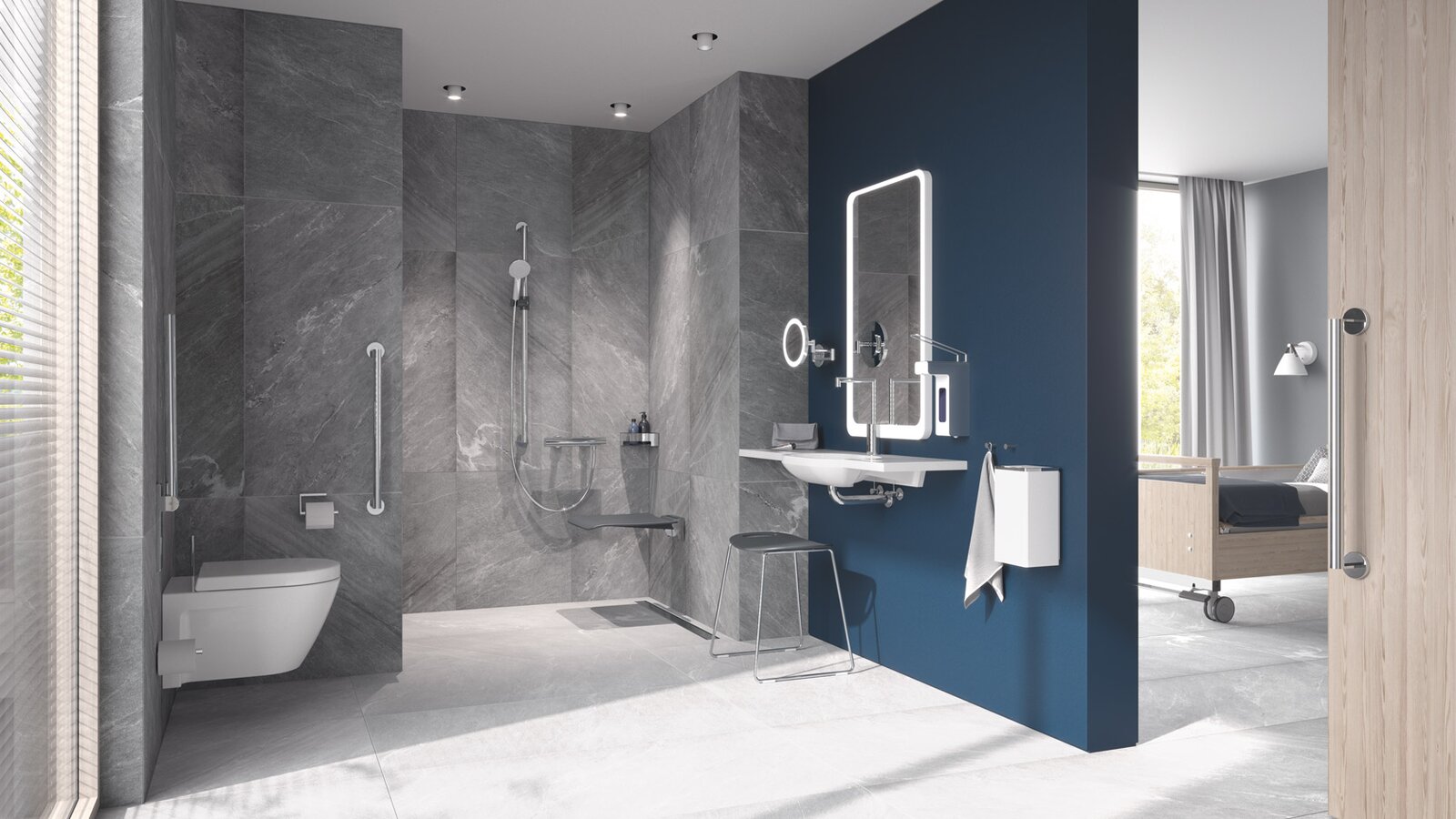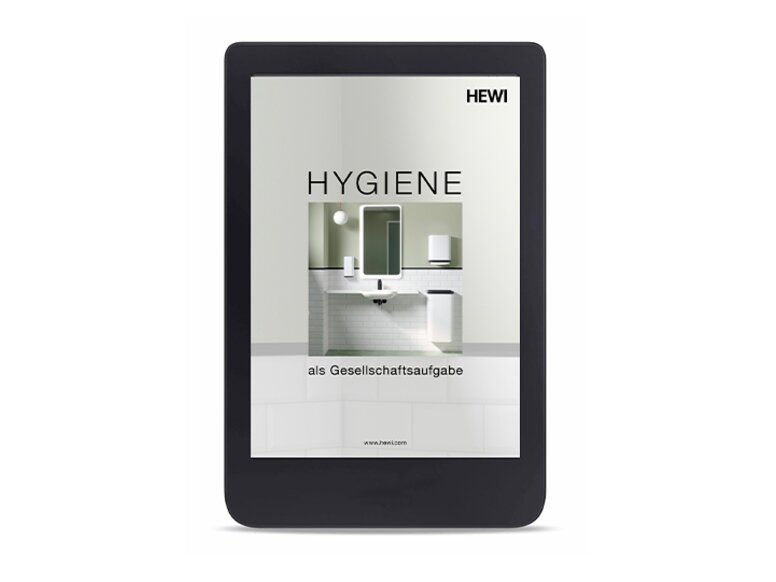HEWI MAG / Clinic
Hygiene in care homes: Tips for implementation
Hygiene is indispensable when it comes to maintaining or improving people’s health. This article briefly summarises what is important when it comes to hygiene in care homes.
Hygiene in care: Why is it so important?
The life expectancy of people is steadily increasing. As a result, the number of people struggling with chronic diseases, immune deficiencies, and physical impairments is also growing. These people need to be particularly protected. Hygiene is the only way to reduce the spread of disease and the risk of infection. Older people or people in poor health in particular are no longer able to fend off diseases as well because of their weakened immune system. They are therefore particularly susceptible to diseases of the respiratory and urinary tracts or wound infections in general. Likewise, the risk for care staff to become infected and in turn transmit pathogens to other residents is particularly high.

How are diseases transmitted?
A pathogen source (i.e. a place from which the disease is transmitted) is usually responsible for the outbreak of the disease. This can be mucous membranes, air, or food and drinks. Viruses or bacteria also adhere to objects. The most common source of transmission is the hands. The likelihood of infection increases the longer one is in contact with the infected person or object. However, not every person is infected. This depends on the immune system and previous illnesses. In addition, other factors influence the risk of infection. For example, how often you can clean your hands or how often a room is aired. The pathogens themselves also play an important role. Some are highly contagious, whilst others are transmissible only through prolonged contact.

Hygiene in care homes. These products and materials help
An important factor in maintaining hygiene is cleaning the hands. In care homes, it is therefore essential to install disinfectant dispensers at important points. For example, in the entrance area, in front of and in the residents’ rooms, and in sanitary rooms. One alternative that is particularly helpful for the entrance area is disinfectant dispenser columns. These are not only used for hand disinfection but are also a visual highlight. As a planner or architect, it is helpful to think about the choice of materials used for certain areas in a care home. For example, at door handles or in the care bathroom. A brief overview of two suitable materials:
- Stainless steel
Stainless steel is a preferred material in medical facilities, in gastronomy, and in the food industry when it comes to high hygienic requirements. It has a long service life and excellent hygienic properties. Studies show that stainless steel is germ-resistant. In addition, the surface is so smooth that it is difficult for germs to accumulate. Stainless steel can also be cleaned quickly and thoroughly. It is also such a strong material that it is insensitive to cleaning agents.
- Polyamide
The material polyamide, also known as nylon or perlon, has some interesting properties. Polyamide is resistant to abrasion and chemicals, antistatic, easy to clean – and thus extremely hygienic. Because of its smooth surface, hardly any germs adhere to polyamide either. It is insensitive to disinfectants and other cleaners. Both materials are therefore ideal for use in care homes and support the cleaning staff.

Hygiene regulations in care homes: This is what you need to pay attention to
Hygiene in the care homes is important. Necessary hygiene measures must also be implemented in care facilities. The legal basis for this is found in the Infection Protection Act (IfSG). The Commission for Hospital Hygiene and Infection Prevention (KRINKO) has developed a special concept for care homes, assisted living, and outpatient care. This is located at the Robert Koch Institute (RKI). The measures take into account the special living situation in care homes and gives recommendations on how to manage the issue of hygiene. Important components of the approximately 20-page PDF document “Infektionsprävention in Heimen” [Infection prevention in homes] include the following topics:
- Personnel and organisational requirements
- Basic hygiene measures for hand hygiene
- Protective clothing
- Reprocessing of medical devices
- Personnel responsible for hygiene
- Hygiene commission
- Hygiene plan and infection prevention concept
Because of different structural and operational requirements, each facility needs an individual hygiene plan. Health authorities of different federal states define the respective framework hygiene plans, which are to be adapted individually. The following measures should be part of the plan:
- Risk analysis
- Measures to reduce risks
- Monitoring of hygiene initiatives
- Continuous monitoring of whether the hygiene concept is effective
- Documentation of the hygiene plan and its implementation

Personnel and organisational requirements for hygiene in care homes
Special staff training and organised procedures are needed in order to comply with hygiene regulations and legislation. The personnel should be trained regularly in hygiene. Care homes should work with a hygiene officer and ensure that a hygiene commission of the relevant professional groups meets regularly. In order to diagnose diseases at an early stage, it is important to involve doctors. Antibiotics should be given out only in a controlled manner. Otherwise, resistance to bacteria may develop. An in-house hygiene concept is also indispensable. It is important to remember that hygiene protects the not only the residents but also the care staff and visitors.
One of the most important preventive measures is hand hygiene. Valuable tips on this can be found in our MAG article on hygienic hand disinfection.
Hygiene in care homes. The key points
Hygiene is indispensable in care homes. Elderly people in particular must be protected from diseases. This can be achieved only if care homes follow a hygiene concept that is consistently adhered to. This is possible only if all employees are involved and regularly trained. Hygiene can also be better implemented with the appropriate products and materials.
Do you already know our hygiene e-book?
Hygiene is a task for society that concerns everyone. In our free hygiene e-book, we inform you in detail about the topic of hygiene and show you solutions for the areas of care, public, hotels, and education. Feel free to download it here free of charge.

